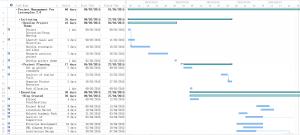In order to confirm interest in the suggested platform, as well as any inefficiencies of the outlets already out there by the University of Southampton, we have conducted an online survey.
The survey was introduced by a short text, informing the participants on what the survey’s goals where, which aspects of module feedback they would be asked to give their opinions on, as well as a brief description of the suggested project and its aims.
The questions were, therefore, divided into three different parts. Questions in part one aimed to discover opinions and satisfaction about the official module feedback forms that the University provides. Users were asked to rate both its usefulness and its effectiveness on module planning. Part two was designed to discover which factors are considered when students select an optional module. Some of those factors are informed by the module feedback forms (such as Coursework style or Student satisfaction, for example), while others were additional (such as the reputation of the lecturer). Participants were given the option to include any additional factors in an ‘Other:’ free text field. Finally part three was investigating interest in the suggested platform (‘Lessonplan 2.0’) and opinions on its features and ambitions.
The results of the survey re-affirmed our assumptions about the deficiencies of the current model and the need for an alternative solution. In summary, the survey highlighted that while half of the students are willing to provide feedback to the University, the majority of them would like some access to the results and does not trust that it has any significant impact on module shaping. All of the participants also agree that ‘Lessonplan’ would be a valuable addition, who could assist them in choosing optional modules, meeting the module requirements and co-ordinating better with their fellow classmates.
Continue reading →


